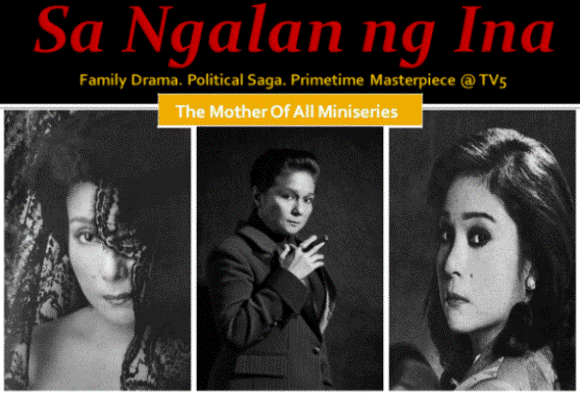 |
| Portrait of a powerful woman |
This fact may yet enrich her evocation of an influential figure in the forthcoming TV5 miniseries Sa Ngalan ng Ina. Directed by Mario O'Hara, whose collaboration with her has racked up a hefty filmography that counts among the best of Philippine cinema, Sa Ngalan ng Ina may yet prove why Aunor is as unsinkable as her character, Doto her troubled stepchildren and to assert her power as governor in a province mired in the morass of politics.
That she will prevail is a foregone conclusion as far as Ateneo professor Tito Valiente is concerned. Observing her enduring phenomenon as a cultural icon, Valiente's recent opinion column about the politics of perception is an illuminating analysis of Aunor's dazzling impact. Despite the dross of malicious demolition job against her resurgent popularity, Valiente waxes clear-eyed regarding the golden glow of her royalty:
"I believe that the small brains and petty prose of these inept writers, both from tabloid and broadsheet, will forever remain miniscule against the formidable psychology of Nora Aunor as an artist.
Nora was never a simple person. She never will be. The epiphany regarding Nora is that she has a mind of her own. She is not as sociable and as open as the other celebrities. I see nothing wrong with that. I am starting to believe that the reason I worship at the shrine of the arts of Nora Aunor is that while her person is inaccessible, her artistry is supremely available.
 |
| The Superstar poses for a cover story of Preview Magazine's forthcoming issue. |
The “Ate Guy” may shortchange some with her volatility (always with reason as I found out years back) and tempestuousness (she has earned the right to have this trait) but the “Nora Aunor” never fails to deliver to us peerless pieces and priceless performances. Those who favor her art know that when her light and shadow cross the silver screen, she would create for us reflections, but more than the reflecting and the refracting, she could break the silver in that screen, and show us the lies and the truths, the shards and the brittle sordid facts behind the glistening surface. Contrary to what others say, great artists, like Nora Aunor, do not hide behind their arts; they reveal and open through the arts more and more realities. These are more than I could ask for. These are already more than I could demand from this Diva Assoluta." (To read more of Valiente's column, click here.)
Indeed, what Aunor is set to show in Sa Ngalan ng Ina and the rest of her upcoming projects will be no less absolute than the amplitude of her resilient grace and radiance both as a person and as a performer.
Viva, diva assoluta!
Viva, diva assoluta!

No comments:
Post a Comment